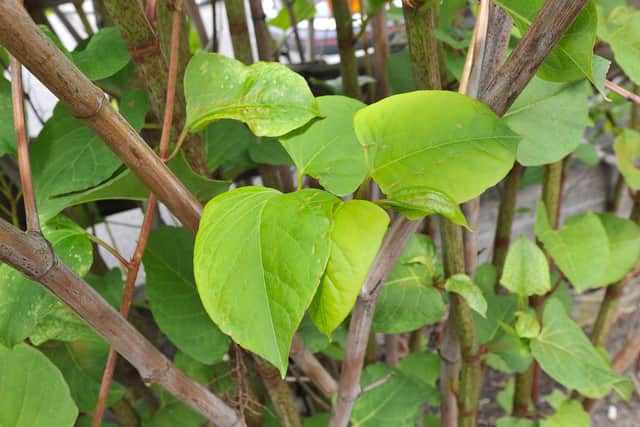Selling your home in Sussex? These five garden plants could devalue your property
and live on Freeview channel 276
The surveying practice carried out the research, revealing the estimated removal cost of each invasive plant.
Property surveyor Bradley McKenzie from Stokemont has also provided some tips on how to spot them.
Advertisement
Hide AdAdvertisement
Hide Ad1: Japanese Knotweed (UK Search volume 90.5K, estimated removal cost up to £15,000).


This plant has bamboo-like red shoots and shovel-shaped leaves and can grow up to three metres tall in spring and summer.
Its roots can also reach 20 metres underground, according to Stokemont, which could ‘destructure’ pipework and drains and weaken building foundations or paving.
Japanese Knotweed is listed as a defect to the property by RICS Homebuyer Reports, with the potential to reduce the price of a property by five to 15 percent.
Advertisement
Hide AdAdvertisement
Hide AdBradley said: “We would highly recommend you seek professional help when removing them as they re-establish easily from even the smallest remains.
"If you prefer doing it yourself, pesticide would be the most effective method to kill those zombie-like plants.”
2: Ivy (UK Search volume 33.1K, estimated removal cost up to £1,000)
Ivy is strong at climbing walls and can penetrate wall cracks, damage mortar and cause dampness and leaks.
Advertisement
Hide AdAdvertisement
Hide AdBradley said: “Unlike Giant Hogweed, English Ivy could be removed with bare hands by peeling them carefully off the wall.
"It is also possible to kill them by cutting their roots off and letting them dry out."
3: Giant Hogweed (UK Search volume 22.2K, estimated removal cost up to £15,000)
Giant Hogweed is invasive, spreads quickly and is more easily spotted in June and July.
Advertisement
Hide AdAdvertisement
Hide AdIt looks like cow parsley but it has thick green stems with purple spots, as well as white flowers shaped like a round umbrella.
Bradley said: “Widespread across the UK, especially around rivers and ponds, its sap is phototoxic and can cause severe skin burns or scars under sunlight.
"Though not causing direct harm to the property, buyers may still refuse to pay a higher price if present because of its high cost of removal – up to £15,000.”
4: Poplar, Willow and Oak Trees (UK Search volume 14.8K, estimated removal cost up to £3,000)
Advertisement
Hide AdAdvertisement
Hide AdLarge trees like Poplar, Willow and Oak can be dangerous if grown close to a property.
The root systems for these trees are shallow and fast-growing and can spread out to 40 metres, taking up 1,000 litres of water and nutrients from the soil.
Bradley said: “If grown too close to your property, they could lead to further risks of cracks in foundations, subsidence and other structural defects, potentially costing you £5,000-£25,000 to repair.”
5: Himalayan Balsam (UK Search volume 12.1K, estimated removal cost up to £2,000)
Advertisement
Hide AdAdvertisement
Hide AdThis plant from the Himalayas was brought to the UK in 1839 and grows up to three metres tall.
It has pink flowers in summer and early autumn and can spread 800 seeds metres away or through rivers.
This can potentially kill other plants and reduce biodiversity by stealing all lights, nutrients or water.
Visit www.stokemont.com to find out more about the work of this multidisciplinary surveying practice.